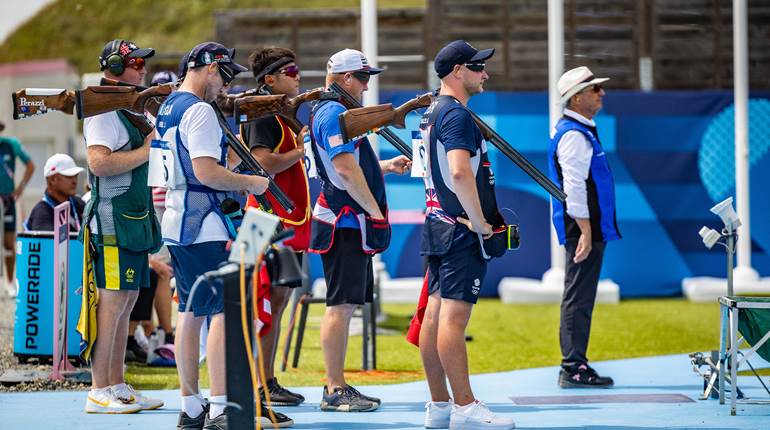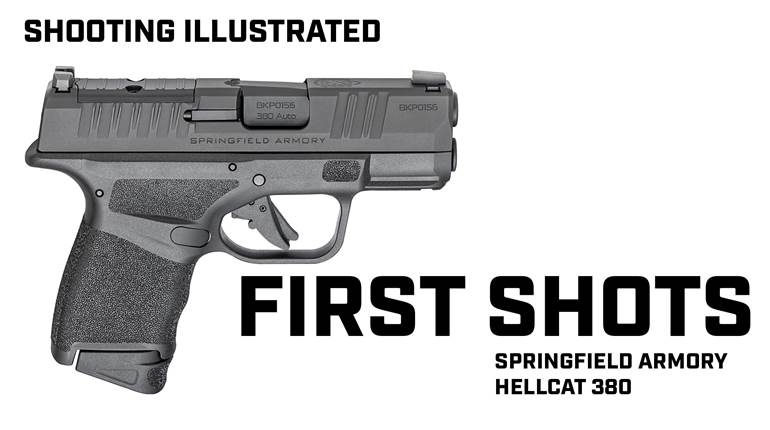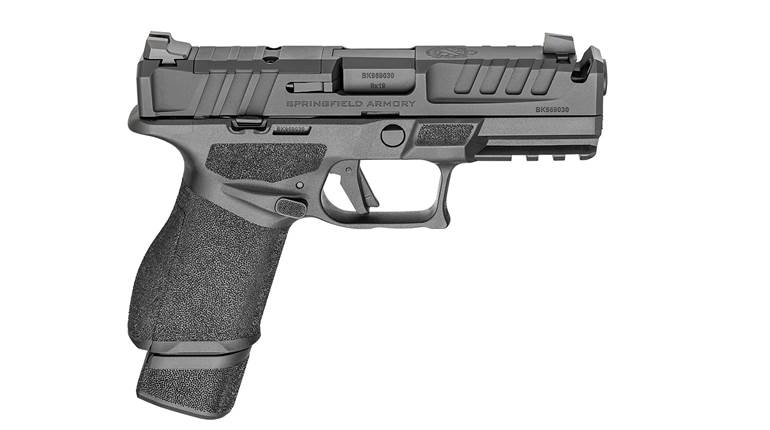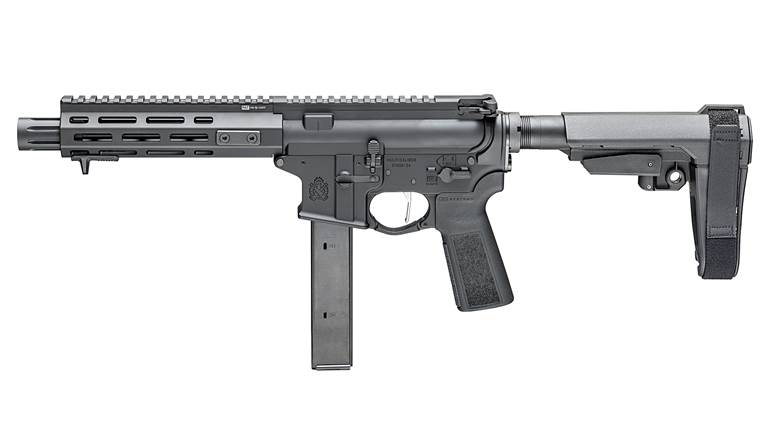
This article, "In Country with the M14," appeared originally in the August 2002 issue of American Rifleman. To subscribe to the magazine, visit the NRA membership page here and select American Rifleman as your member magazine.
I have a tremendous amount of personal experience with the M14 rifle. I first handled one and saw it demonstrated at Camp Perry, Ohio, when I was only 13. I lived with one in my room for four years as a cadet at West Point. I qualified with it, drilled with it, paraded with it, competed with it, trained with it and trained cadets in following classes how to shoot it.
While I was a cadet at West Point, the M16 was entering U. S. military service in large numbers, particularly in Vietnam. I became a fan of the M16, but it was clear even then that the M16 had a number of performance limitations compared to the M14. The Army took the "one or the other but not both" approach, and within a few years, the M14 was completely replaced by the M16A1 as the standard U. S. Army service rifle.
When I went to Vietnam and the 1st Cavalry Division in August 1970, my primary rifle for most of the first half of my tour was an XM16E1 (an M16A1/M203 grenade launcher combination), but we had a fair number of M14s in use alongside our M16s. While an infantry rifle platoon leader, I almost always had at least two M14s in my platoon and, sometimes, an XM21, the M14's sniper version. At the time, my platoon rarely consisted of more than two eight- to 10-man squads.

Interestingly, one of the platoon's M14s was a non-standard carbine version. It had its barrel shortened to just in front of the gas system, the barrel rethreaded and the front sight/flash suppressor assembly remounted. This special M14 was "off the books" and was highly coveted by platoon members who handed it on as its various carriers rotated out of the unit.
The story behind this interesting rifle began when the platoon was on R&R in a rear area. Several platoon members noticed the gun in the back of an MP's jeep and decided they needed it more than some MP REMF. While several platoon members distracted the MP, another lifted the M14 carbine from the back of his jeep. It became part of that platoon's armament thereafter.
How the rifle got into that short-barreled configuration we will never know. I do know that H&R had made some experimental prototype M14 carbines, but I do not know if it was one of those or an in-country conversion. That M14 carbine was handy, powerful and most definitely loud!
It was during this period that I really developed an appreciation for the M14 and its 7.62 mm NATO cartridge for jungle operations. Two particular incidents come to mind that helped influence my feelings. One involved an encounter with a Vietcong who dove behind a tree just as I spotted him. My attempt to shoot him through the tree with my M16 failed miserably, and he got away. I was quite sure that if I had been shooting an M14, he would not have escaped.
On another operation, my patrol was called up for an emergency extraction because we were needed badly somewhere else. When we arrived at the only potential landing zone within many miles of thick jungle, we found a tropical hardwood tree located in such a way that a helicopter could not land. After barely chipping the bark off the tree with a machete, it was obvious that something else would have to be done to get rid of it. As I considered using several of our precious claymore mines to take the tree out, one of my more experienced troops came up with his M14 and offered to shoot the tree down.

After making sure we had no troops downrange, with a good bit of skepticism, I gave him the go ahead. He walked over to the tree, held his rifle fairly level to the ground and began shooting through the tree left to right with shots spaced about an inch or two apart. Before he got through his second magazine the tree fell over as nice as you could please. I later worked with 1st Cavalry Division snipers using XM21s to take out the enemy by shooting them through the trees they were behind. During small-unit engagements, one sniper named Staff Sergeant Crow liked to use a technique called "precision traversing fire."
After identifying the likely location of an enemy soldier behind a tree, he would aim maybe a foot or two off the ground at the edge of the tree and, in a cadence not unlike rapid fire in a match, move each subsequent shot across the tree a few inches apart. Often before he traversed to the opposite side of the tree, an enemy soldier would fall away from the tree, hit by a combination of bullets and wood fragments. In one particular engagement, he accounted for nine of the enemy using that technique.
I came to the conclusion that the 7.62 mm NATO cartridge was the best choice for combat in heavily forested areas like our area of operations in III Corps in Vietnam, due to its superior penetration. I am not talking about "bucking brush." No conventional rifle bullet does that very well. I am simply saying that in heavily timbered areas the superior penetration of the 7.62 mm NATO compared to the 5.56 mm NATO is highly valuable in getting to an enemy taking cover behind trees or in bunker-type fighting positions made from logs.
After about a half year in the jungle, running combat patrols, I got promoted to company executive officer. It didn't take long before I discovered that the division sniper detachment was largely manned by gun enthusiasts like myself. After we got to be friends, they gave me a customized M14 that one of their armorers had built using a standard M14 barreled action.

It was glass-bedded into an M14E2 pistol grip stock with the front hand grip removed and a standard M14 buttplate fitted. My customized M14 had a quick detachable Griffin & Howe type scope mount base on the left side. I had an old Korean War-vintage M84 scope sight in rings that could be attached in an instant. That rifle shot beautifully and was my almost constant companion for most of the rest of my tour. Indeed, the only other rifle I ever carried in combat was an XM21sniper rifle.
My custom M14 and my XM21 were a joy to carry—accurate, reliable and real confidence builders when things got hot. They were also extremely reliable. I remember one particular incident where I took a spill in a swampy area and completely submersed my M14 and myself in deep, soupy mud. Both my rifle and I were coated with brown muck from head to toe and were, I imagine, quite a sight.
All I did was find a relatively clean puddle of water and swish my rifle around in it. When I test fired it, it worked perfectly. Naturally, I did a thorough cleaning as soon as I could. As an aside, my customized M14 is now part of the West Point Museum collection. The reason many of my troops liked the M14 was the same reason I came to prefer it: superior penetration against cover. In a contact, our main base of fire came from the one or two M60 machine guns that we carried. If they went down, only the M14s had the power and penetration to fill in effectively.
I left active duty and began my career as a gun writer about 24 years ago. Since that time, I have had lots of exposure to various commercial versions of the M14—particularly the Springfield Armory M1A line. In all my years of experience with the military M14 and its commercial derivatives, I have fired or been present at firing tens of thousands of rounds through them. Much of the time, it was in nasty field or combat conditions. I think I could count all of the observed malfunctions in all that time on one hand. Take it from me, M14s are extremely durable and reliable performers.
For more on the M14 and M1A platform, check out "6 Reasons to Reconsider M14 & M1A Rifles" and "The M14 Rifle: John Garand's Final Legacy."





































